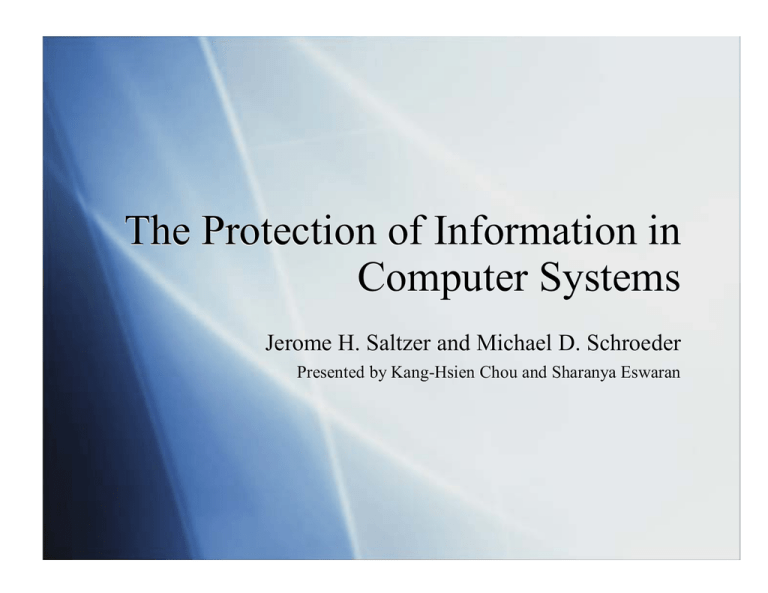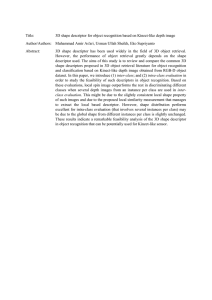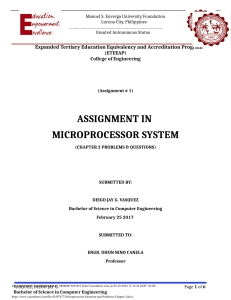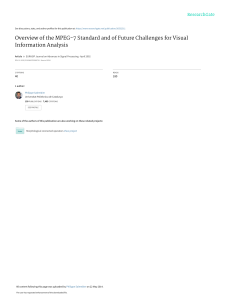The Protection of Information in Computer Systems The Protection of
advertisement

The Protection of Information in Computer Systems Jerome H. Saltzer and Michael D. Schroeder Presented by Kang-Hsien Chou and Sharanya Eswaran Outline Separation of address and protection Capability system and access control list system Protected subsystem Role based access control (other mechanism) Research directions Descriptor-based system Capability system and access control list system Early feature is to prevent from writing in other users’ allocated memory. (IBM System 360) “fetch protect” was than considered (IBM System/370) The scheme is supported by many OS including Honeywell, Hydra, StarOS … Separation of Address and Protection All memory accesses need to go through two level of descriptor. Each segment must be a distinct addressing descriptor. A unique segment identifier An offset address The protection descriptor itself no longer contains a base and bound. Capability system Who can load values into the protection descriptor registers? Privileged state bit To allow any program to load the protection descriptor registers, but only from locations in memory that previously have been certified to contain acceptable protection descriptor value. Two kinds of objects stored in the memory. Protection descriptor values Ordinary data value Tagged bit Access control list system Storage area for data and access controller Address descriptor for the associate segment Access control list Authorization check When a virtual processor attempts to refer to the segment associated with the access controller, the memory system looks up the principal identifier in the access control list. Protected subsystem Why protected subsystem? Only those access restrictions provided by the standard system facilities can be enforced. Execution of a borrowed program in the borrower’s domain can present a real danger to the borrower. A protected subsystem is a collection of program and data segment that is “encapsulated” Care taker program Role based access control Role based access control is formalized in 1992 by David Ferraiolo and Rick Kuhn. Why RBAC? DAC allows users to grant or revoke access to any of the objects under their control. However, if the end uses do not “own” the information for which they are allowed access? RBAC is a nondiscretionary access control mechanism which allows and prompts the central administration of an organization specific security policy. Provide means to Naming, as well as relationships between individuals and rights The user can not pass access permissions on to others at their discretion. Research directions Certification of the correctness of protection system designs and implementations A precise model (complete isolation?, sharing of information?) Verify if the presented implementation actually does what it claims. Friendly user interface System software runs without protection constraints Invulnerability of protection system design Undetected disabling of the protection mechanism Constraints on use of information after release Research directions (cont’d) Encipherment of information with secret key how to communicate the keys to authorized users Schemes for protecting the keys Development of encipherment techniques Improved authentication mechanisms Personal attributes Bioinfo Rhythm of keyboard typing







